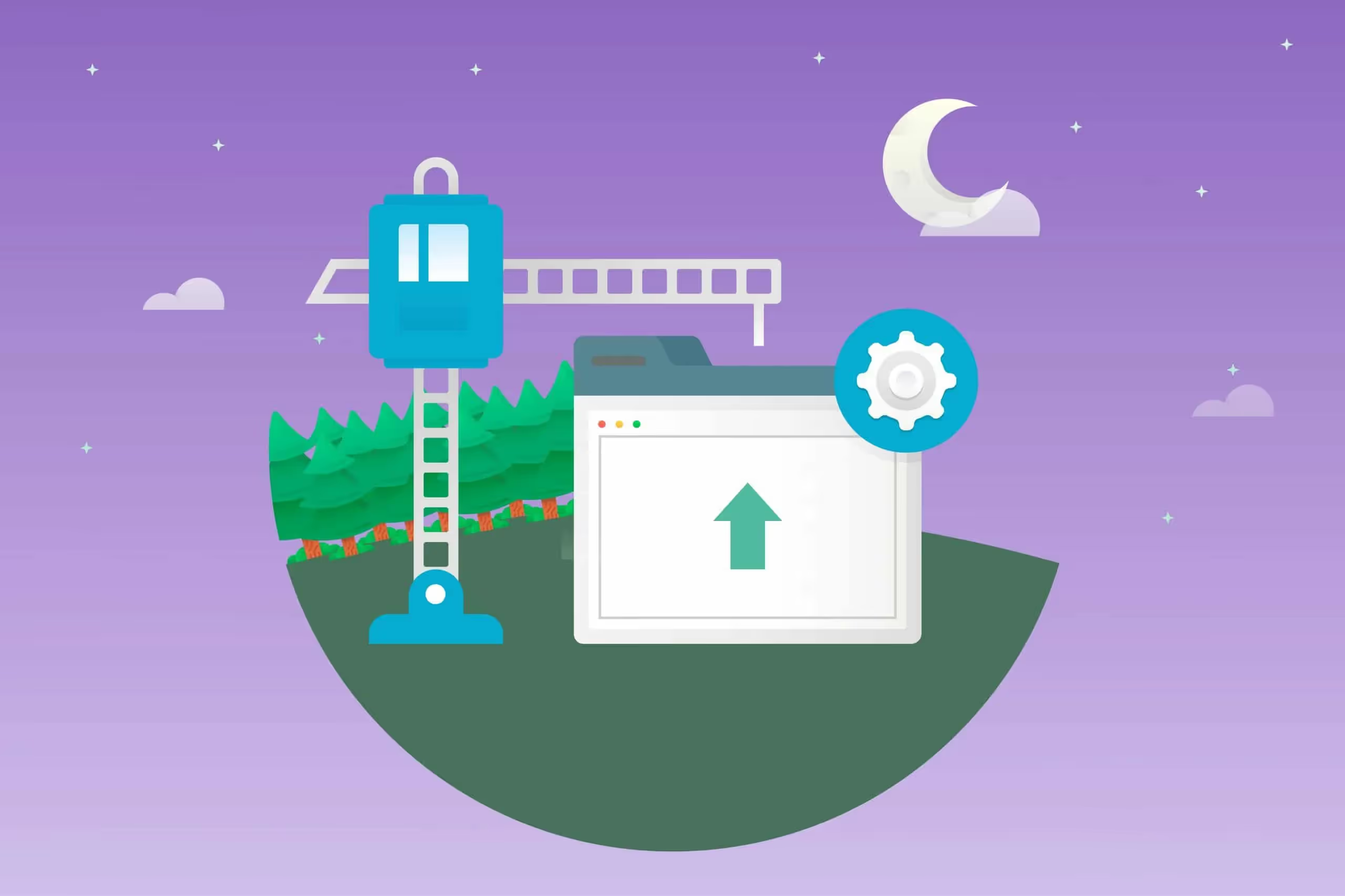

What do you think of when someone says "smartphone"?
I am sure there are a few brand names that pop up into your thoughts. That is because people behind those names successfully build brands for their products.
In this article, we will go over:
- How to Define Your Brand (Big Picture Perspective)
- How to Easily Define & Segment Ideal Users
- How to Approach Market Positioning (In Brief)
Enjoy!
Reality Check: How Do You Define Your Brand?
Here’s the deal - very few SaaS founders concern themselves with branding while their software or apps are being built.
Their product is the focus!
Sure, ‘Build a good product and they shall come running.’ might sound logical, but it just doesn’t happen like that. It sounds like it should, but no, not by a long shot.
Why?
Well, because of the psychological realities underlying human-brand relationships.
How do you personally define what a brand is? You can describe a brand’s features (color scheme, logo, etc.), but what is it really in a Platonian or Socratic sense?
While you could collect hundreds of different takes from people of all walks of life if you wanted, the simplest way to think about it in our humble opinion would be,
“Your brand is the way people FEEL every time they interact with it.”
Feelings might be hard to spot at first, so try a smidgen of self-experimentation.
Think of five favorite brands that are a part of your everyday life. Now, ask yourself as you consider each, how do they make you feel?
There WILL be a feeling...
We come to expect it, don't we, and when brands stop delivering this particular feeling, we find another that will (or we hold steadfast into antiquity). These days it often has absolutely NOTHING to do with the actual product itself - but something the overall company did or was connected to - political stances, environmental moves, an executive decision on a largely customer-prompted issue, etc.
If nothing’s coming to mind right now, then just imagine you’re told you can have a free pair of shoes.
Awesome!
Then they show you five pairs of shoes you’ve never seen before of the same exact functional value, design quality, and cost.
Which will you strap to your feet?
Ultimately, it’ll be the one that sparks...a feeling!
If the shoes don’t do it but you want a pair, you will, you’ll create an emotional connection and choose. It might be based on the feeling of a long-held memory; perhaps the feeling inspired by a certain commercial or something someone said the other day...
Any feeling of substance, but often they’re very simple feelings - safety, security, reliability, love, happiness, and so forth.
Try to mentally capture the feeling as you waltz around a party in your new <insert clothing brand> outfit…as you cruise down the highway alone in that <insert car brand>...as you take a bite of chocolate delice, mandarin sorbet and mango dessert at <insert restaurant>...you get the idea.
That’s the big picture perspective, right?
Overall, your brand is an emotional experience. It begins with a logo, a website, web pages, the product, etc., but really we’re talking about feelings here.
Now that we’ve got that settled, let’s cap this introductory section off with three other ways of defining your brand from John Solomon’s piece on ChargeBee entitled ‘SaaS Branding: What Makes Your Startup Special?”
- “Your brand is what sets you apart from other players offering similar services in the market.”
- “It is your identifiable stamp that makes everyone know that a service or product is created by you.”
- “Your brand is a mirror of what customers see and think [and feel!] about your company.”
Moving on...

Segmentation - How to Quickly Find Your Users
Simply put, we believe you can quickly and easily (in a roughshod, non-collegiate way of course) discover your users through value scaling.
Apply the 80/20 rule here.
Namely, 80% of the value your SaaS provides to human existence will be most leveraged by about 20% of your user base. The more you can segment these folks, the more successful you can be at CURATING brand experiences.
Everyone appreciates it!
Value coupled with emotional connection is at the forefront of consumer psychology.
For example, pretend you’re selling a specific kind of hunter’s knife.
How would you talk to a soccer mom looking for a functional knife she can carry in her purse to FEEL more secure, vs. an actual hunter who just wants to FEEL like ‘one of the crew’ in the new hunting community they joined recently?
It depends on them, right? The soccer mom might not sense urgency, or feel immediately in danger. Meanwhile, the hunter may be going through a midlife crisis!
Your SaaS might be the perfect solution for a billion people, but within those billions will exist a scale of personal and professional value depending on HOW your product is used.
How many ways can you use and derive value from a strong metal paperclip in any number of circumstances?
When you approach through the prism of value, you’re able to better customize and personalize your approach -- which these days translates as transparency.
Generating Initial Users & Customers
With an iron-clad grip on your scale of value, you can then begin reaching out and speaking to potential users and customers in the right way. The Inner Trends blog delved into How four SaaS experts found their first customers, and they lend well to what we’re talking about.
Let’s briefly look at each.
- Referral & Affiliate Programs: Once you’ve got a great platform up and running with a relatively well-polished software product, you should consider opening referral-based and affiliate programs. These can be incredible assets if taken seriously. To be successful you’ll need the resources to create an exceptional experience for your affiliates, AND moderate them. The last thing you want is referrals from horrible people or affiliates out doing horrible things with your brand in the background.
- Personal Networks: When entrepreneurs go through this the first time, it can be tough. Friends might not be interested. Family might not be enthused. Acquaintances might not take you seriously right away. That’s okay, keep plugging along anyway and perfect that demo! This next one really helps...
- Value-Based Incentives: If you already know the soccer mom is looking for a feeling of security, why not sweeten the deal with something that can reinforce that feeling your hunter’s knife provides? What kind of other incentives could you provide to the hunter who’s trying to become the Inspector Gadget of his hunting crew? Creating incentives is honestly one of the funniest steps in the branding process!
- Go Free for a While: The trick with anything ‘free’ is that it immediately feels less valuable. Yes, if we toss you the keys to a sports car, you’ll take’em, but it feels different. A free car FEELS different from a car you win or save up for and purchase with your own blood, sweat, and tears. The magic really happens when you let someone get in and drive their dream car around for a while, with them knowing the whole time they’ll need to hand over the keys soon.
No one can argue the freemium models are incredible when executed with creative and innovative precision. Question is, do you have enough to back that position yet?
In that light, let’s switch gears and move into market positioning.

Market Positioning
When all the sugar coating, whip cream, and sprinkles have melted away, market positioning is tough! It really is...like rock hard cookie dough.
These days the journey begins with what we could call your ‘Header Text’ when you acquire new customers.
It’s the sentence you put in the header of your new SaaS website that’s supposed to accomplish a TON in one fell swoop:
- Explain what your product does; the problem it solves.
- The statement should leave an impression; be a differentiator.
- Instigates the website’s overall UX; ideally an action-driver!
Ugh...that all just seems insane.
Let the professional copywriters worry about that kind of commercial madness.
It might be more beneficial to you and your core SaaS team to simply build on what we’ve already covered -- emotions and value -- then, begin a sort of picturing your place in your niche as an actual location.
In Ch. 2 ‘Positioning and Branding Your Product’ of HotJar’s SaaS Startup Guide, they make this distinction early on.
“Think about your product’s position in terms of a location on a map. Any decision you make, for example choosing whether or not to build a new feature or integration, will make your move on this map, placing you closer or further from where your competitors are located.”
You don’t want to be so close it gets awkward, but you don’t want to go completely off the reservation either.
Remember, what gives your brand power? What makes it increasingly real and a part of our world, or, less and less into obscurity and eventually non-existence?
- Every single solitary time a user interacts with it.
- Either the experience strengthens the brand, or weakens it.
As you’re experimenting with your positioning in your specific niche or market, pay attention to whether what you’re doing is bringing you closer or pushing you further away from your core user base.
Let their experience light the way, and this should (all other things being equal) lead to a much better position in the marketplace without you having to sell your soul to mind-numbing generalities.
Wrapping Up
Hopefully, somewhere in the chaotic-poetic madness that is 21st Century commercial SaaS branding, you find what we’ve put together useful.
Here are the topics we touched upon over the last several minutes:
- Your brand is a feeling, strengthened or weakened one user experience at a time.
- Use a value scale to determine how you approach and segment users.
- Use #1 & #2, not fancy copywriting, to direct your market positioning.
Frequently Asked Questions
😎 How can I make my product more popular?
In order for your product to more popular and induced into users' daily lives, you need to effectively build your brand.
❓Why should I build a brand for my product?
A well-known name with a good reputation will evoke a sense of love and trust in the users. You need to build a brand to make use of this situation.
📣 How can I build a brand for my product?
Be genuine, offer real value to your users, and get fame for delivering on your promises about your product. As people love you, your brand will be more popular.

















.svg)
.svg)
.svg)
.svg)
.svg)

.svg)
.svg)












.svg)
.svg)




.png)

















